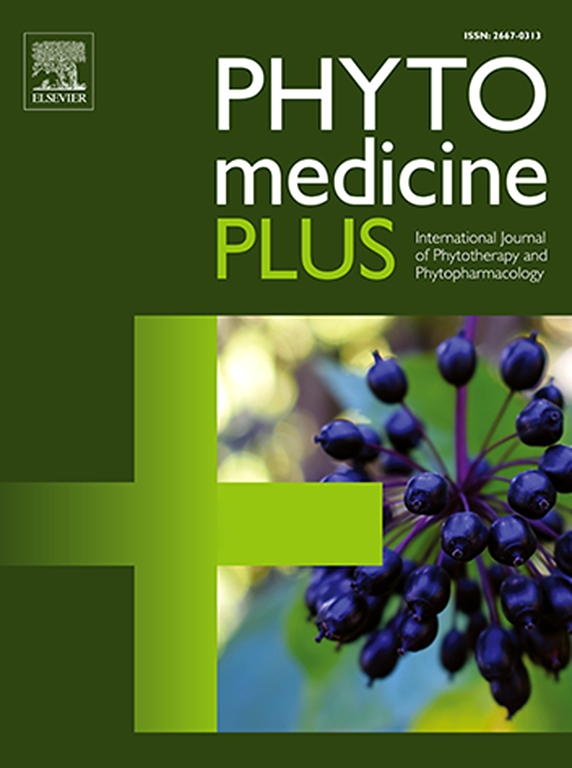Rauwolfia vomitoria- a promising medical plant for benign prostatic hyperplasia management; yet with challenges
Q3 Pharmacology, Toxicology and Pharmaceutics
引用次数: 0
Abstract
Background
Benign Prostatic Hyperplasia (BPH) is a common condition among aging men. This condition often leads to a reduced quality of life due to its debilitating symptoms. Although conventional allopathic treatments are widely used for managing BPH, they are frequently associated with adverse side effects, prompting a global shift toward natural and alternative therapies. This study aims to investigate the therapeutic effects of Rauwolfia vomitoria Aqueous Root Extract (RVARE) as a potential natural oral treatment for BPH.
Methodology
Six groups of male Sprague-Dawley rats were established [N = 7/group]. Group 1 comprised of normal rats whilst group 2 to group 6 comprised of BPH induced rats. Group 1: Control group- received normal chow diet. Group 2: Model group- [no treatment]. Group 3: received 10 mg/kg. b. wt. RVARE. Group 4: received 25 mg/kg. b.wt. RVARE. Group 5: received 50 mg/kg. b.wt, RVARE. Group 6: served as a positive control [Finasteride]. The study was carried out for 28 days. Upon termination, blood was sampled for general biochemical, haematological and PSA determination. Systemic organs and the prostate were harvested for histological analyses.
Result
Histopathological analysis of the liver of RVARE treated groups demonstrated alterations. Additionally, a reduction in relative prostate weight compared to the model group was observed, though not statistically significant (p > 0.05). However, a significant reduction in prostate specific antigen (PSA) levels was seen in the RVARE-treated groups (Model vs Gp 3, p = 0.001; Model vs Gp 4, p = 0.000; Model vs Gp 5, p = 0.001).
Conclusion
RVARE appears to be effective in reducing prostate size and PSA levels. However, its hepatotoxic effect needs further investigation.
一种治疗良性前列腺增生的有前景的药用植物——吐夫草然而面对挑战
背景:良性前列腺增生(BPH)是老年男性的常见病。这种情况往往导致生活质量下降,由于其衰弱的症状。尽管传统的对抗疗法被广泛用于治疗BPH,但它们经常伴有不良副作用,促使全球转向自然疗法和替代疗法。本研究旨在探讨吐狼水根提取物(RVARE)作为一种潜在的天然口服治疗BPH的疗效。方法建立雄性sd大鼠6组[N = 7/组]。1组为正常大鼠,2 ~ 6组为BPH诱导大鼠。第一组:对照组:给予正常饮食。第2组:模型组-[未治疗]。第三组:给药10 mg/kg。b.我不知道。第4组:给予25 mg/kg。b.wt。RVARE。第5组:给予50 mg/kg。b.wt RVARE。第6组:作为阳性对照[非那雄胺]。研究进行了28天。终止后,采集血液进行一般生化、血液学和PSA测定。采集全身器官和前列腺进行组织学分析。结果RVARE治疗组肝脏组织病理改变。此外,与模型组相比,观察到前列腺相对重量减少,但无统计学意义(p >;0.05)。然而,在rvare治疗组中,前列腺特异性抗原(PSA)水平显著降低(模型vs Gp 3, p = 0.001;模型vs Gp 4, p = 0.000;模型vs Gp 5, p = 0.001)。结论rvare能有效降低前列腺大小和PSA水平。但其肝毒性作用有待进一步研究。
本文章由计算机程序翻译,如有差异,请以英文原文为准。
求助全文
约1分钟内获得全文
求助全文
来源期刊

Phytomedicine Plus
Medicine-Complementary and Alternative Medicine
CiteScore
3.70
自引率
0.00%
发文量
178
审稿时长
81 days
期刊介绍:
 求助内容:
求助内容: 应助结果提醒方式:
应助结果提醒方式:


